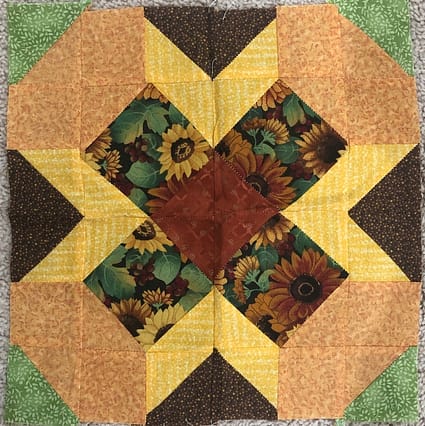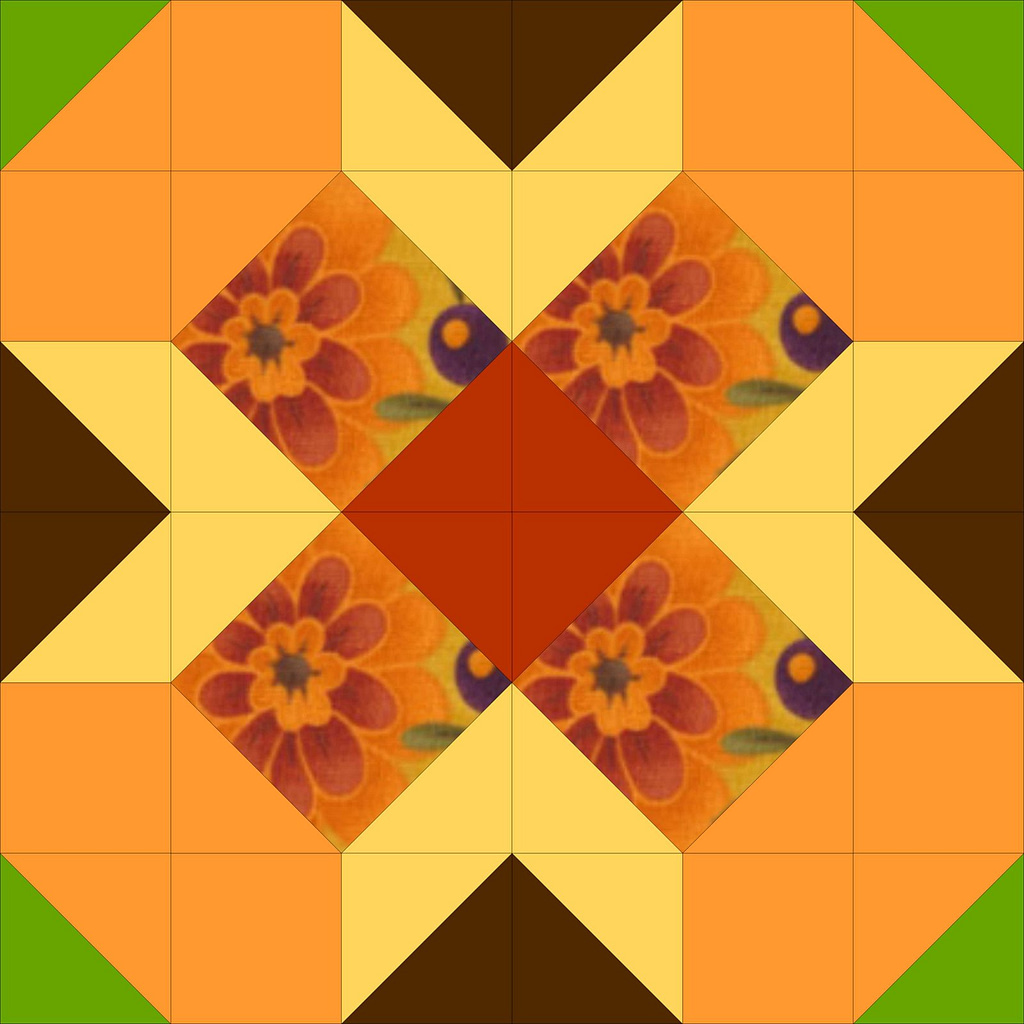
While cleaning up my studio, I found plenty of unfinished objects – UFOs. One of these was a block I started many years ago without a pattern or guide. It is not a traditional block, but was a combination of double cross and flying geese.
Looking at it now, I understand why I abandoned it! I was going to throw it away, but my husband convinced me to keep it as a teaching piece.
The colors were and fabric pattern were fine. However, the fabric was VERY stiff and almost scratchy – obviously not good quilter quality. It was not prewashed because it was a fat quarter pre-cut. If I were to use this fabric in the future, I would pre-wash to see if the feel would improve. If it did not, I would not use it.
Fabric issues aside, my stitching was awful! The threads show at almost every seam. This is not because the tension of my machine was off. The seams were not set by pressing them flat, before pressing the pieces open.
The next issue was the alignment of seams. From a distance, they look passable. When you look closer, they are terribly off kilter. The block was assembled as four squares on point – sunflower print surrounded by two yellow triangles, a rust triangle and an orange triangle. Those blocks were sewn together as a four square, before I understood anything about pressing seams in the right direction of nesting seams. Can you see the misalignment where the four squares meet in the center?
Then, there were the twelve half-square triangles – HST – on the corners and middle edges were again passable. However, sewing them into what resembled flying geese units was not precise. The blocks would have looked much better if the HST had been glued together first and then sewn. That would have allowed the pieces to be auditioned and minimized the use of my seam ripper. Did you notice the two HST on the left corners? There is no way the points will be crisp as they will be in the seam allowance. Granted, it will not be as noticeable because one half of the HST matches the block next to it. If they were different colors, the HST would have a blunted end.
Since then, my techniques have significantly improved. That took time, practice and learning from others. I still watch videos and take classes from other professionals. It is the best way to hone my skills. That in turn helps me to write better patterns and be a better teacher. We make mistakes to learn from them.
Happy Quilting
Laureen


